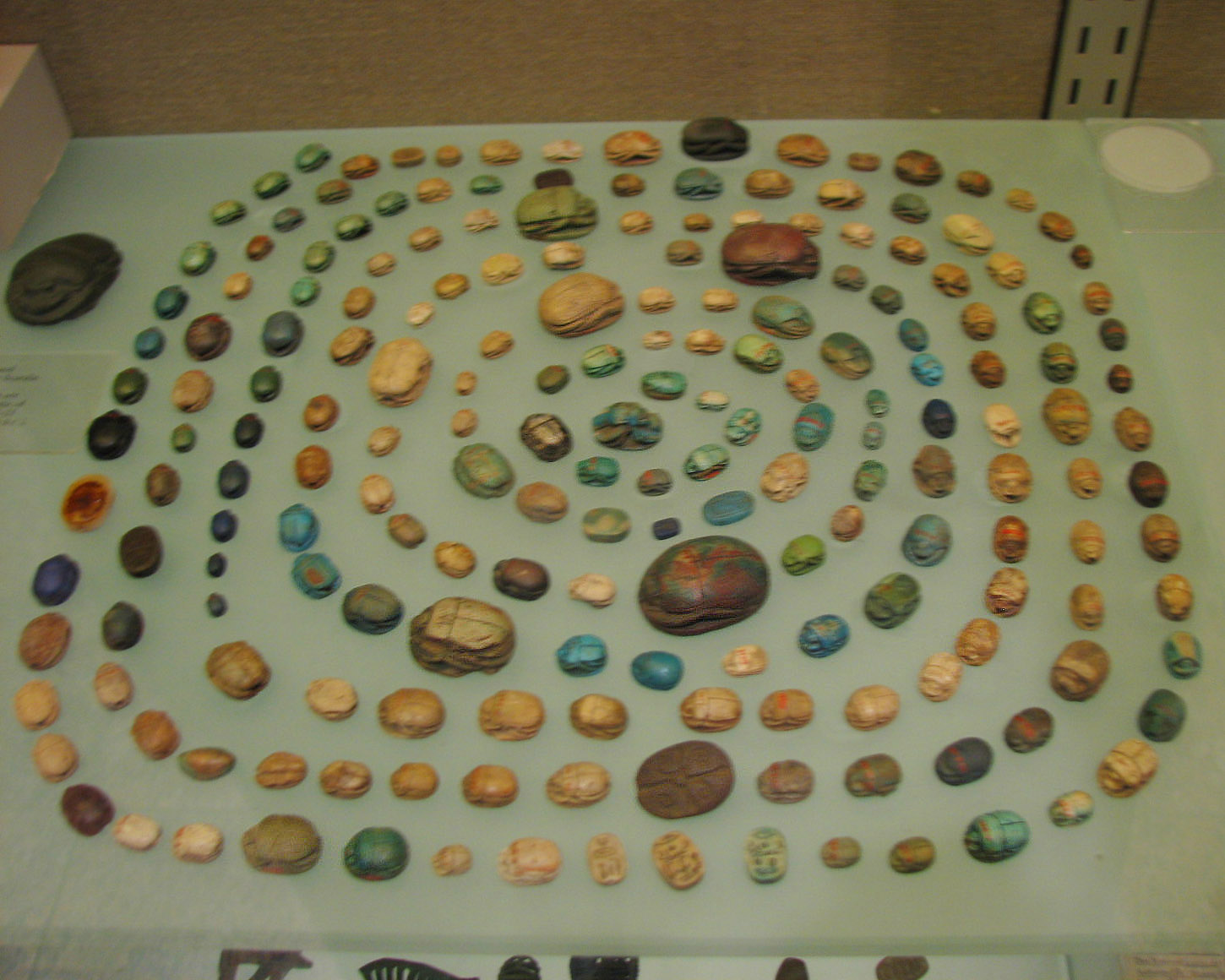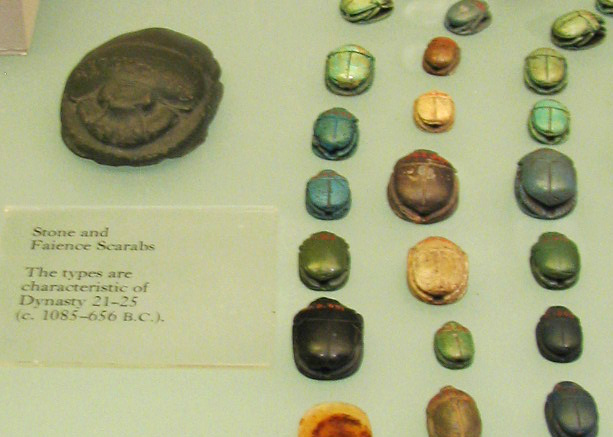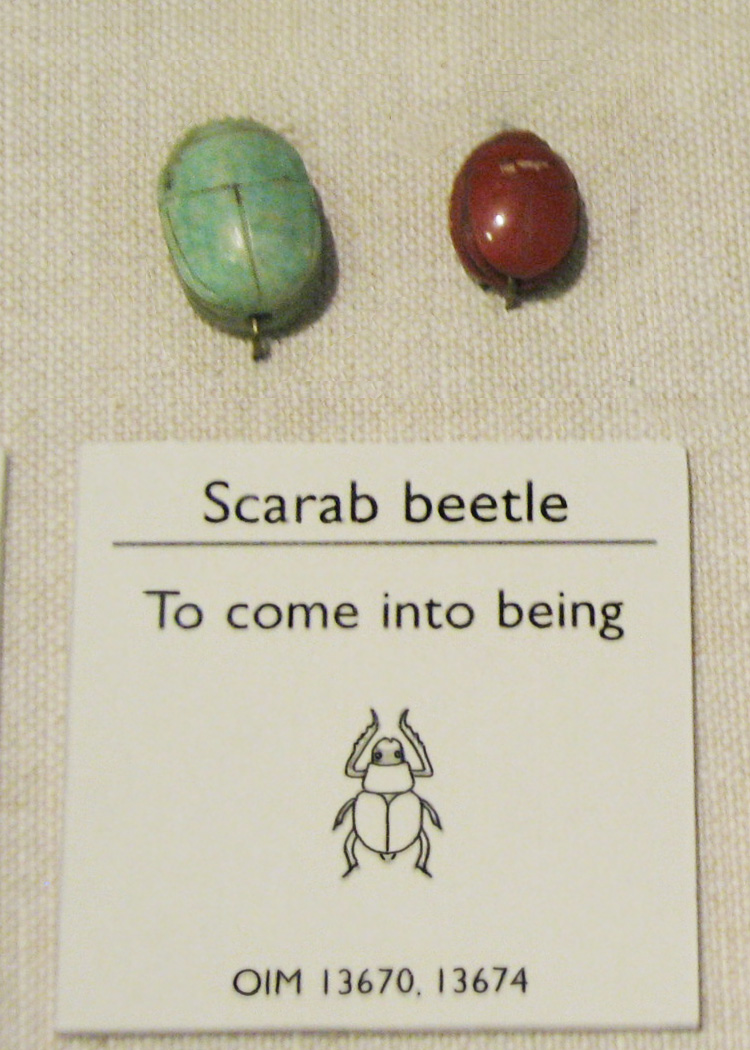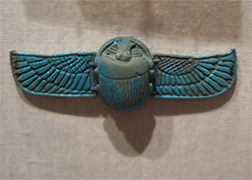
Spiral of MANY scarabs at Metropolitan Museum, NYC
From Late Period, Dynasties 21 to 25



|
Bob Brier writes: "Perhaps the reason the ankh was not more popular as an amulet was that there was another to serve the same function: the scarab. These are carved in the shape of a beetle, the Scarabaeus sacer, from which the modern word comes." Scarab amulets are abundant, the Metropolitan museum has a whole shelf full of them. "There are several reasons why the scarab became such an important amulet. The Egyptians were especially fond of puns, and the hieroglyphs for beetle (pronounced kheper) also meant 'to exist'. So if you wore a scarab amulet, your continued existence was assumed." (_Ancient Egyptian Magic_), pages 145-146)
 Scarab beetle: "to come into being", Oriental Museum
Djet never changes, it is static. Osiris is "lord of djet: 'Wennefer'..." (Ibid) is his title, 'beautiful existence', "immutable permanence", wen=existence, nefer=beautiful. "The crouching hare was also a hieroglyph, with the sound value wn (wen). Among its most frequent uses was in writing a word meaning, 'to be,' 'to exist.' _Eternal Egypt: Masterworks of Ancient Art from the British Museum_, by Thomas Garnet Henry James, and others, page 162) But wen-existence is not a becoming-into-being existence. Thus, for hope of regeneration, the kheper-scarab is the desired amulet. There's further reasons why the ancients liked the scarab. They thought the scarab reproduced "without the union of male and female", "like the god Atum who begot children without a female partner." Also, "the scarab was revered is that when the scarab fashions the dung ball it rolls it with its hind legs to a sunny place. To the ancient mind this in some way resembled the journey of the sun across the sky" (Brier, _AEM_, page 146), a cyclical occurrence.
 Scarabs, Some Winged, at Brooklyn Museum
The Brooklyn museum website explains, "Nets made of faience beadwork became a fashionable feature of mummy wrappings in the Late Period. Faience amulets formed part of the beadwork pattern and served to protect the mummy through their magical properties. This scarab is one of the finer examples of such amulets. It served as a substitute heart that would ensure continued existence in the hereafter."
|